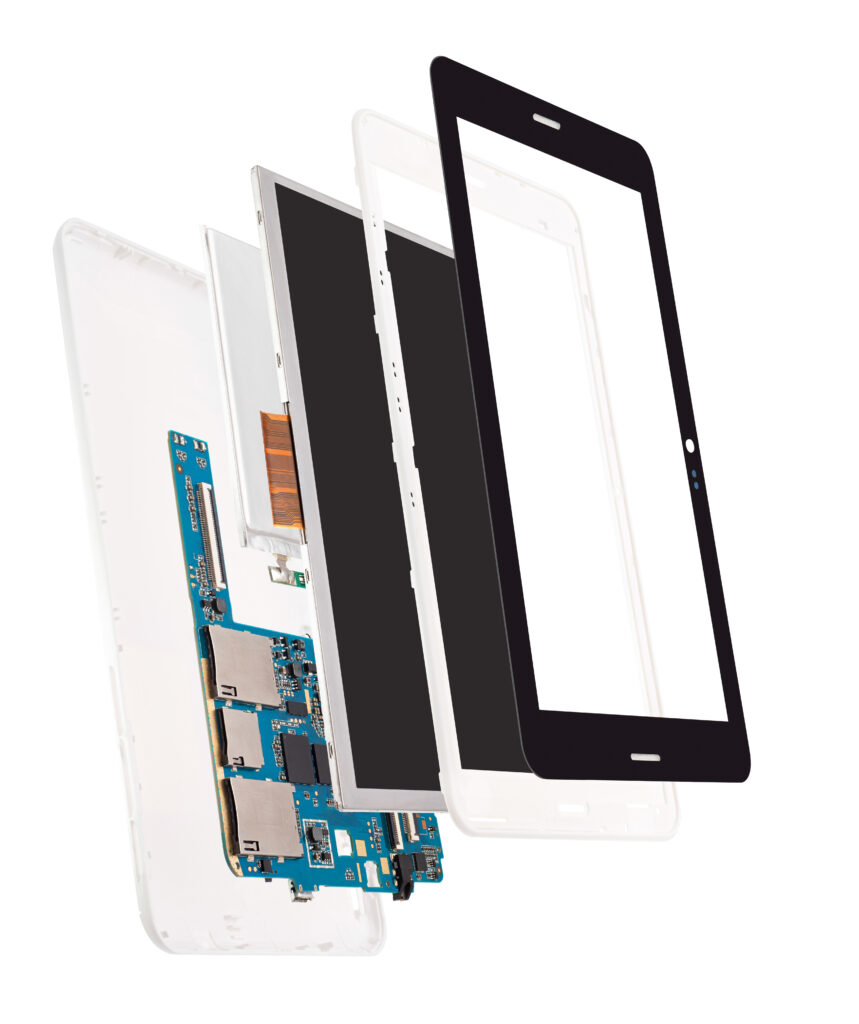Touch Screens
Planar, Capacitive, and Resistive Touch Screens
Elite Technology is a touch-screen manufacturer with unique manufacturing capabilities to give you the ability to transform your product designs with touch screens that make your devices more interactive and easier to use. We specialize in manufacturing planar, capacitive, and resistive touch screens that can improve the performance and manufacturability of your devices.
Our dedication to quality enables our design team to make touch screens more manufacturable, saving you on project costs and reducing your design time at every step of the production process. We also follow up our design expertise with exceptional customer service, competitive pricing, short lead times, and on-time deliveries of the high-quality touch screens that make you stand out in the marketplace.
Applications
We produce the finest touch screens for many electronic applications, including:
- Medical
- Automotive
- Electronic uses
Contact touch screen manufacturer Elite Technology for more information about our planar, capacitive, and resistive touch screens today.

Types of Touch Screens Manufactured by Elite Technology
Resistive Touch Screens
- 4-Wire
- 5-Wire
- 8-Wire
- Matrix
The 4-, 5-, and 8-wire touch screens are analog resistive touch screens. Each type offers a wide variety of standard sizes, and we can make custom designs according to customer requirements. The matrix is a digital resistive touch screen — contact us for the differences in each type.
Because each of these touch-screen designs has similar working principles, only the 4-wire operating principle is discussed below.
Operating Principle of 4 Wire Resistive Touch Screen
The construction of the touch screen is a two-layer structure. The top layer is typically PET film, which is hard-coated on the non-conductive (top) side to prevent scratches. The bottom layer can be PET film or glass. The conductive sides of the top and bottom layers are coated with ITO (indium tin oxide). The layers are separated by printed, transparent, non-conductive dots to provide spacing. When in operation, a controller provides voltage to the unit. As soon as contact is made between the two conductive layers, the controller determines the X and Y coordinates, calculating the voltage at the touch point. In this standard design, the X direction is normally on the top film and the Y direction on the bottom film.
Planar Resistive Touch Screens
Planar resistive touch screens are different from typical resistive touch screens. The planar resistive touch screen has an additional film or membrane switch attached to the top by clear glue, which adds to the appearance of the touch screen. Planar touch screens are the best choice for meeting certain design requirements where necessary.
Capacitive Touch Screens
A capacitive touch screen is typically all glass, versus a resistive touch screen, which can have a top layer of PET material. The glass layers have a metallic conductive coating. Electrode patterns along the edges distribute a low-voltage field over the conductive layers.
A human finger or a conductive device held by a human hand touches a point on the capacitive touch screen, which draws a small amount of current to that point, causing a drop in voltage. The controller calculates the touch point, registers the touch, and triggers a response. Greater durability and a light-transmission rate higher than 90% are unique advantages of capacitive touch screens.
Touch Lens Touch Screens
Touch lens touch screens differ from traditional touch screens in that touch lens touch screens are integrated within the face of a device. This does away with the sunken or depressed appearance of the conventional touch screens because there is no bezel around the screen. Touch lens touch screens are capacitive in that they operate by touching them with a finger or conductive device.
Touch Screen Specifications:
| Environmental Conditions | • Compression Molding And Silk Screening |
| Life Expectancy | • Please Refer "Precise" Tolerance Chart |
| Mechanical | • 95.25 mm |
| Electrical | • Operating voltage: 5V • Linearity: 1.5% or less • X, Y resistance: 30–300 Ohms (varies by screen size) • Operating current: 5mA–25mA • Insulation: >20M Ohms (25 VDC) • Impedance: • Resolution: 4096 x 4096 |
| Optical | • Light transmission >80% |
| Thickness | • Film Thickness: 0.188mm • Glass Thicknesses: 0.7, 1.1, 1.8, 2.0, & 3.0mm |
